Maja Alm and Daniel Hubmann took the Gold medals in the World Orienteering Championships Sprint in Tartu, Estonia today. Maja Alm took her third WOC Sprint medal in a row – an incredible impressive performance! Daniel Hubmann won the World Orienteering Championships 6 years ago in Chambery – and was very happy to be on top again.
Far ahead of the competition
Maja Alm won a very clear victory – 37 seconds ahead of silver medalist Natalia Gemperle (Russia) – with another Russian, Galina Vinogradova, in third, only 1.7 seconds behind Gemperle.
A day for the veterans
In the men’s class it was a day for the veterans. Frederic Tranchand, bronze medalist from WOC Sprint in Trondheim in 2010, took the silver medal only 2.9 seconds behind Hubmann. Jerker Lysell finished third – only 5.2 seconds behind Hubmann.
Maps
WOC Sprint Men

» See map in omaps.worldofo.com
WOC Sprint Women

» See map in omaps.worldofo.com
Results
Men
| 1 | Daniel Hubmann | 14:30 | 3:37 | ||
| 2 | Frederic Tranchand | 14:33 | +0:02 | 3:38 | |
| 3 | Jerker Lysell | 14:35 | +0:05 | 3:38 | |
| 4 | Matthias Kyburz | 14:36 | +0:05 | 3:39 | |
| 5 | Jonas Leandersson | 14:43 | +0:12 | 3:40 | |
| 6 | Vojtech Kral | 14:49 | +0:18 | 3:42 | |
| 7 | Martin Regborn | 14:54 | +0:23 | 3:43 | |
| 8 | Hakon Jarvis Westergard | 14:56 | +0:25 | 3:44 | |
| 9 | Martin Hubmann | 15:03 | +0:33 | 3:45 | |
| 10 | Antonio Martinez Perez | 15:04 | +0:33 | 3:46 | |
| 11 | Tue Lassen | 15:08 | +0:38 | 3:47 | |
| 12 | Andreu Blanes | 15:18 | +0:48 | 3:49 | |
| 13 | Peter Hodkinson | 15:20 | +0:50 | 3:50 | |
| 14 | Chris Smithard | 15:21 | +0:50 | 3:50 | |
| 15 | Gaute Hallan Steiwer | 15:21 | +0:51 | 3:50 |
Women
| 1 | Maja Alm | 13:55 | 4:05 | ||
| 2 | Natalia Gemperle | 14:32 | +0:37 | 4:16 | |
| 3 | Galina Vinogradova | 14:34 | +0:38 | 4:17 | |
| 4 | Venla Harju | 14:49 | +0:53 | 4:21 | |
| 5 | Anastasia Denisova | 14:52 | +0:56 | 4:22 | |
| 6 | Elena Roos | 14:57 | +1:02 | 4:23 | |
| 7 | Cecilie Friberg Klysner | 14:58 | +1:02 | 4:24 | |
| 8 | Ursula Kadan | 15:03 | +1:07 | 4:25 | |
| 9 | Ida Marie Naess Bjoergul | 15:04 | +1:08 | 4:25 | |
| 10 | Marika Teini | 15:07 | +1:12 | 4:26 | |
| 11 | Karolin Ohlsson | 15:10 | +1:14 | 4:27 | |
| 12 | Lina Strand | 15:16 | +1:20 | 4:29 | |
| 13 | Nadiya Volynska | 15:17 | +1:22 | 4:29 | |
| 14 | Anastasia Rudnaya | 15:24 | +1:29 | 4:31 | |
| 15 | Julia Gross | 15:26 | +1:30 | 4:32 |
 World of O News
World of O News
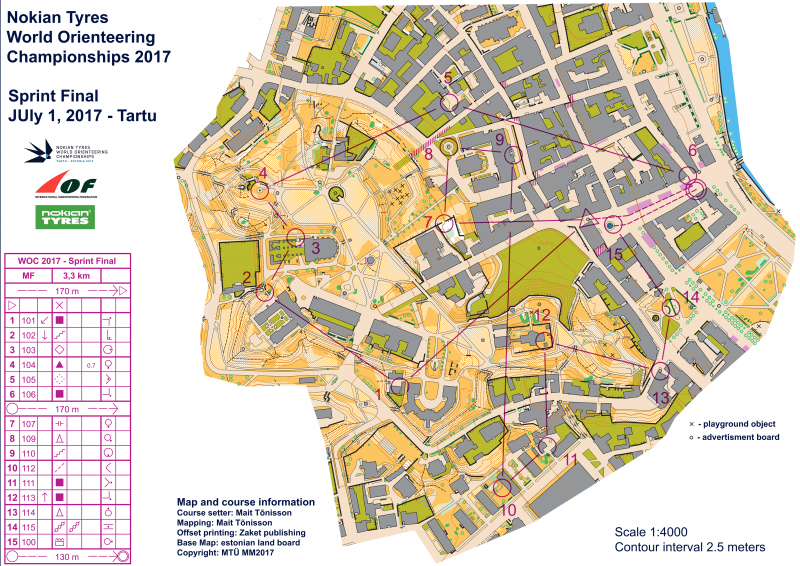
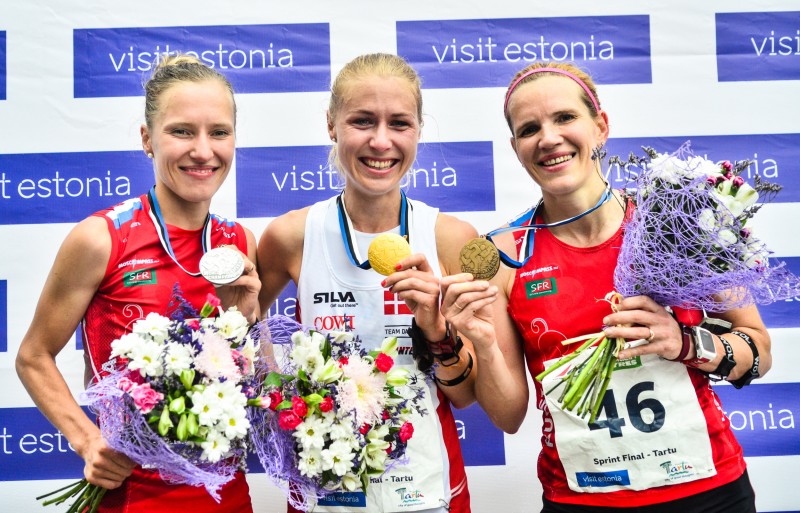
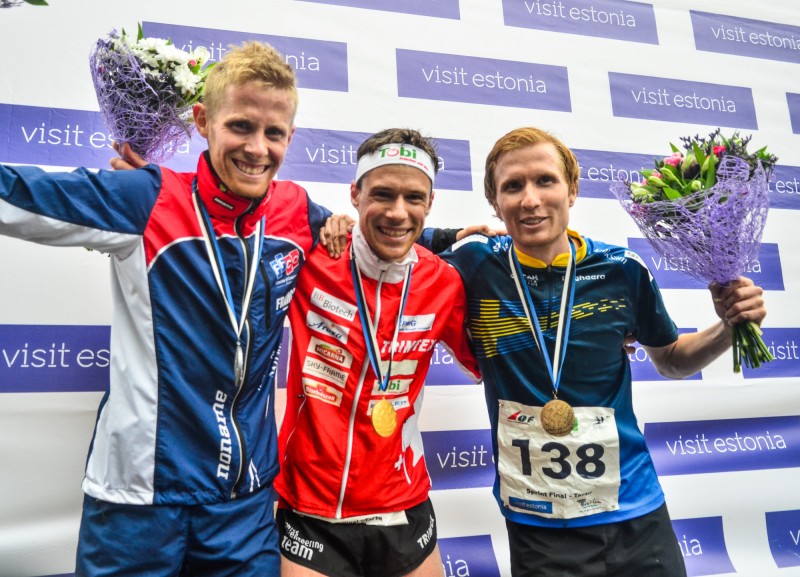
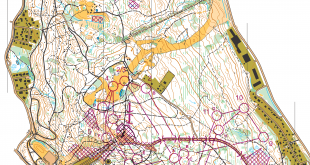
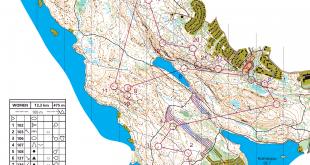
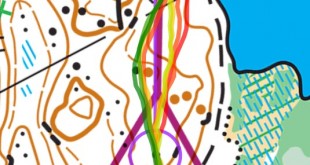
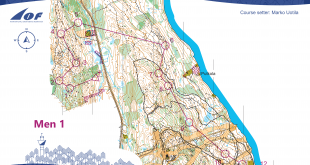
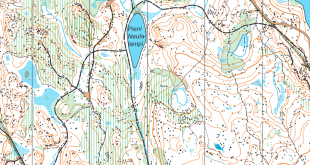
Once again I am surprised how results can get official at World Championships that contain people running trough forbidden areas or not behaving according the rules of our sport.
It was obvious from TV that Competitiors were running through forbidden areas and “over” fences wich were forbidden to cross. (I know they were not in place, wich is in my eyes a big failure by the organizer, because its a fence they did draw and wanted to be there. Its a different case if some private fence gets moved or is not in place, but not an organizer fence)
If you dont set up these fences, wich seems to be part of the problem, so at least get some people there guarding for those cheating. Probably nobody did it in purpose, yet those who didnt turn and run back (like Hubmann or Kyburz, Svensk, Reiner…) should get disqualified. Its always hard to tell according to GPS tracking, but some were also visible in TV. My guess is that Pawlak, Nakonechnyi and probably also Gvildys should get disqualified. Next time hopefully before the results get official.
Despite that it was a thrilling race for the audience
They were dsq by organisers, but Poland made protest which was upheld by the jury and the runners reinstated.
Thanks for your comment. Didnt knew about it and you never get that information as spectator.
I guess it was really bad marked in the terrain. Lets say simply wrong according to the map. Still I am a bit surprised they got back to the results list. Since its at least half their mistake. But its a hard case to judge. Luckily the medal contestants turned around.
Just had a quick look at the courses and the GPS tracks. According to the rules every competitor underpassing the obvious bridges to control 1 and control 2 should be disqualified. There is no underpass on the map (dotted line) and the bridge wall is not passable. They crossed an impassable line according to the map.
Thats not the same thing and one of the problems on every orienteering map, that you cant represent 3D problems like that. So the rule is that you represent one level, the level wich is most likely to be run on. You cant represent a bridge that you cant jump down by any other way.
So its a different story
There is ISSOM 2007 with symbol 518.1 Underpass or tunnel.
On the team meeting before the competitions there was a question about the bridges:
“Q: If there are any bridges, is it allowed to jump or climb up a bridge?
A: According to ISOM2007 the bridge symbol 512.1 is not forbidden.”
So it was clear for everybody that you can climb jump pass or do what ever you want on a bridge.
Thanks for clarification
WHAT?! On EOC in Sweden some years ago Anne Margrethe Hausken ran through a 10 meter wide open gate, which was not on the map (!), in an impassable fence. She didn’t understand the mistake and continued. She was disqualified with the argument that the map shall always govern and it is the runners responsibility to follow the map. I agreed in the argumentation and the disqualification at that time, and from the gps-tracking and the discussion here I don’t see any difference in the situation at yesterdays WOC sprint. It seems like the jury decisions are totally random and differs from championship to championship.
A punishment is not the aim of any race. Fair play is the aim. It is ok – to do mistakes – visit wrong control or miss control, if you come back and do it all right. Hubman lost time, but come back and correct his mistake. Your story about AMH is completely different. “She didn’t understand the mistake and continued. “
Generally I think the rules should be followed, and if the rules are not as intended, the rules should instead be changed. If it is intended that it is allowed to run into a forbidden area and then out again (like Hubmann did), then it should say so in the rules (or at least the Foot-O Commitee / Council should publish guidelines as an appendix to the rules about how they are to be followed). As it is now, Hubmann should in my opinion be DSQ’ed according to the rules. Please change the rules if this is not how they are intended. And now, with a rule change, how many roses are you allowed to destroy before you are DSQ’ed when you run into a flowerbed and return the same way? As many as you want?
I can see that there is a difference between “understanding the mistake and return” and “not understanding the mistake and continue”. However, the ISSOM 2007 does not distinguish between these two situations. Forbidden is forbidden. In both cases the ISSOM 2007 says that the competitor shall be disqualified. I can also add that two or three runners who didn’t return where Hubman returned, but continued through the closed road (Pawlak, Nakonechnyi and probably also Gvildys), were also accepted by the jury. And that is excatly the same situation as with Hausken. And if you look at other IOF competitions the last years the organisors have made the opposite decision about this. In JWOC 2015 Sara Hagstrøm, one of the favorites in the women class, ran into an olive green area, understood the mistake and returned the same way she went in. She was disqualified for this. I have looked through some examples from last 5 years from WOC, EOC, JWOC and Norwegian championships, and it looks like that the juries at WOC is clearly more reluctant to disqualify runners for passing forbidden areas and barriers than in the other competitions. Jumping over an impassable fence and jumping back again has been accepted at WOC, but excactly the same situation led to DSQ in the Norwegian championship.
Is this what we want? With the jury decisions at the WOC sprint at Saturday it has been legal to unintentionally run into a forbidden area as long as you don’t gain any time advantage on it. And this is certainly not the intention in the IOF competition rules. From chapter 2.3 in ISSOM 2007:
“To make sprint orienteering fair to all competitors, features that are represented on the map as impassable,
independently of their effective passability, shall not be crossed.
This rule is essential for two reasons:
– It is impossible to declare an exact height when an obstacle becomes impassable. Effective passability depends very much on the physical characteristics of the competitors such as body height and strength.
– If features represented as barriers on the map are declared as forbidden to cross, the conditions are the same for all.
Running and navigational skills should be the success factors for competitors in a race, rather than luck when it comes to climbing or jumping barriers or violating public law.
Crossing of certain areas and linear features in parks and urban terrain may be forbidden by law.
Consequently, competitors who do not obey this rule, which is part of the IOF competition rules, must be disqualified.”
We shouldn`t considering the disqualification runners or not. In this situation which happened during sprint final it was 100% organizers fault. On TOM they showed how OOB areas will be look like in the terain (fully taped or fence). Organizers did not informed that they left a lot of space for pedastrains walking in the city from both sides of the fence (what caused all that mess). So when the street was 10 meter wide and tapes/fence was only in the middle (about 3 meters ) runners did not realizead that it was those place with OOB.
Second thing is why judge who was standing there disqualified not everyone entering OOB ?
Generally I think the spirit of the rules and the fair play should be followed. If IOF will write appendixes after every race = we will have rules on thousand pages very soon and lawers competition after every WOC. This story is not about roses. It is about trap. Trap for fast runners in rainy day. I think it is not fair – to follow only one rule and forget about others, forget about spirit or rules. ISSOM 2.6. – “The course planner should not encourage unfair actions from the competitors”. ISSOM 521.1 – An impassable wall or retaining wall is a wall, which fulfil the function of an enclosure or solid barrier”. If You draw a wall on map – You must have a wall in terrain. If You use red tapes for OOB – You must draw a red line (ISSOM 709). Check a picture on https://twitter.com/evajurenikova Can You see a wall before runner?
The worst is that judge disqualified only three runner’s from Poland, Russia, and Lithuania(before the protest was made). But also
4 other runner’s like Hubmann (you can see it on gps and tv) get into the forbidden area in the same place between control 9-10 and they were not disqualified :( On the other hand map shows something different what it was in reality. So the runner’s didn’t jump over the fence because it wasn’t there and it’s difficult to see it when you are runnig full speed and you are reading a map. My point is that the rules are not the same for everyone :(
From the mapping point of view I think it is highly questionable to map artificial Out of Bounds in two different ways, just to produce traps. In at least two instances I see artificial OOB only marked with the 528.1 …
We need one rule, and that rule should be stuck to. This would avoid the uncertainty and delays caused after a race by protests and appeals, and then the athlete would know during the race what the outcome of their actions will be.
Personally I think if someone makes an innocent mistake and completely retraces their steps, they should not be disqualified. They may have squashed some roses or annoyed a land owner, but in this instance the fault lies with the controller for not ensuring that the OOB areas were adequately marked.
I see two problems here:
1) Vague artificial obstacles, which leads to the second.
2) Vague rules, that become rubber paragraphs, that need to be gently interpreted to not spoil the party.
If putting up artificial obstacles, make them obvious, sturdy and arranger observed. Disqualify whoever passes them.
From the rules…
2.7 Sporting fairness shall be the guiding principle in the interpretation of these rules by
competitors, organisers and the jury.
If there is a map error, it can’t be fair to DQ a runner from crossing a fence that wasn’t there. Similarly, it can’t be fair to disadvantage other runners if Hubmann gained time going OOB. Luckily, the outcome here is fair in both cases, in that Hubmann didn’t gain any time. The only issue is whether the missing fence was a large enough error to require voiding the whole course, which is likely where they would have ended up if they DQed the runner who was clearly the best on the day.
In a WRE race I organised once, Daniel Hubmann self-DQed after jumping down an uncrossable wall, which nobody saw him do. whether he’d do that at WOC is another question.
31.6 The IOF Event Adviser shall ensure that rules are followed, mistakes are avoided and
that fairness is paramount
So the Event Advisor is responsible: good luck getting an admission of any mistake! Maybe he should have brought along that electric fence from the long course last year.
Organisors are making it too difficult for themselves. If they want to close a street why plan to put up a fence when you will need to let non-competitors, cars, etc to go through so there will be openings. Just mark the entire street with the red out of bond sign and you don’t need any artificial boundaries at all. And why use thousands of meters with continuous marking to mark the olive green areas? Who wants to arrange sprint competitions if you have to do that? And what if you forget to mark 2% of the olive green areas, or somebody removes some of the marking during the competition? Is it then allowed to enter the unmarked olive green area? Let the map show what’s forbidden or not, and let the competitors navigate accordingly. That is also the intention in the competition rules.
Also, how did Yannick get away with that route from 4-5?
I studied this situation there some minutes on the GPS tracking. I guess its a GPS blunder and not him crossing any forbidden thing. It takes him just to much time to just have climbed over the forbidden wall. But thats just a guess. Hope he would have had dsq himself if he would have crossed there
I find the decission by the Jury surprising. They actually allowed runners to run through a forbidden area that saved them time. How is that possible? What if Kyburz had continued straight (not turned around) and won the race, beating Hubmann who turned around. Would the Jury in this case have crowned Kyburz world champion?
@tomas, The jury were lucky that the situation you mention didn’t happen, but they do have to make a decision. As I see it, they have four options:
1/ void the race
2/ DQ everyone who went OOB
3/ DQ people who went OOB and didn’t turn back
4/ DQ nobody
What do you think they should do?
Yes, that’s the question isn’t it. And as always it is quite a bit easier sitting in front of my computer making decisions than having to make one who will decide the actual outcome of a World Championship.
I was not in Tartu and do not have all the information. However, as I experienced the race through the live broadcast I have to say the race was so affected by errors (discrepancies between map and reality) that I am leaning towards alternative 1. Obviously this is a super hard choice to make in real life.
The more I think about it alternative 4 might actually be the right choice but not the correct one if you understand what I mean.
The key issue however is that there need to be a clear line so that the athletes know what to expect. If you compare this decision with i.e. the DSQ of Hausken Nordberg in Falun some years ago, it just doesn’t make sense.
What were the other discrepancies you observed? Apart from having some runners run into the area discussed here (said fence was inspected and approved by IOF before the race), everything seemed fine to me.
No, sorry, what I meant was that all the errors made by world top athletes at leg 10 and the fact that so many of them ran into OOB area probably should have voided the race. I don’t know if there were other errors like this one other places.
Luckily the runners in front of the ranking turned around and therefor at least didnt gain any time. So at least nobody got a “better” result by this.
The problem I see is not only about if a runner gets dsq or not. Its also about ranking points these runners gained. Some country will maybe be relegated or opposit because of this.
Its time to have an official rule.
Organizers must be aware that if they tell before the race that there will be tape or such, it must be everywhere 100% perfect. So they should try to use as less as possible artificial to avoid mistakes made by them. Mistakes made by the organziers should always be in favour of the athlets.
The problem here is that the map was not correct. Then it is more difficult to disqualify the runners. However, going back to earlier EOC’s and WOC’s and looking at what the jury has decided in similar cases then I think it would be correct to disqualify those runners who ran through the entire street and didn’t return. This would be in line with the jury decision at EOC in 2012 when Hausken was disqualified (and lost a medal) for running through a not mapped 10 meter wide open gate in an impassable fence. Those who returned should not be disqualified as this is in line with the jury decision at WOC in Finland 2013 where a protest from a runner who jumped over an impassable fence and immediately jumped back again was accepted.
Good questions Graeme.
As background, I was told at WOC2015 that the SEA chaired any jury, so there may be a disinclination for a jury to find fault with anything that the SEA has oversight of.
This is not a good position to put anyone in.
This looks like rubbish course setting to me. Why would IOF approve of a venue and map that needs gimmicks and tricks to make it work? Garden beds and walls are obvious to the naked eye, so why go to the trouble of putting artificial OOB on a course? Failure all round by setter, controller, organiser and IOF. Not fair to competitors and fails the sniff test. Who at IOF will be held accountable for this?
I don’t know if it is just semantics Dave R, but the SEA can *lead* the Jury, but shouldn’t have been *chairing* it. Certainly in TrailO the Jury appoints a Chair/spokesperson and the SEA gets no vote – the SEA is there to guide only. The idea is NOT to point the finger at the SEA or organising team but to establish what the decision should be based on the rules as they stand, but taking fairness into a/c.
In my opinion, Graeme has got it right in a nutshell – those are the only 4 options. Maybe in another world time penalties could be given (e.g. double the advantage gained – that might have worked for AMH in Falun), but that isn’t a current option – likewise taking out legs might on occasion be fairer to all.
In this case I’m suprised that Graeme’s 3rd option wasn’t followed – accept that the entrances to these OOB were not as clearly marked as they could have been, but since these are all Elite orienteers they should have quickly realised their mistake and returned as indeed the Swiss chaps did.
Having people cross and not come back the same way and allowing the results to stand must be wrong even if they are far down the field as it enables them and their country to get better rankings and/or Long starts in the future.
As for the situation when someone crossed a forbidden fence and then returned then I’d have been less generous – unless it was a 30cm high ornamental one of course.